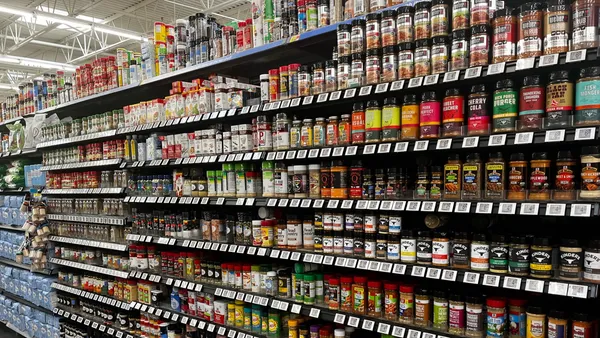Bill Gray spends his time crafting strategies to enable independent grocers to connect with shoppers by offering them deals. But when it’s his turn to redeem loyalty points, the president of retail promotions specialist Givex Rewards adopts the point of view of an ordinary shopper looking to save money.
“When I get that free cup of coffee from Starbucks, I get jazzed — and I’m in the business,” Gray said. ”‘Free’ is a great word.”
Gray’s company positions itself as an ally for thousands of independent grocers and convenience store operators across the U.S. as they compete with national retailers. Known as Loyalty Lane until it was acquired in 2022 by Givex, a Toronto-based financial technology company, Givex Rewards helps smaller retailers run loyalty programs, issue digital coupons and manage other tools to help build ties with customers.
The company also runs an enterprise coupon platform, which CPG representatives can use to load digital coupons for distribution to people who shop at grocers Givex Rewards serves as well as retailers that work with other loyalty companies.
Givex Rewards’ customers include grocery cooperative Associated Wholesale Grocers; Yoke’s Fresh Market, which runs 19 grocery stores in Idaho, Montana and Washington state; and Kansas City, Missouri-based Price Chopper.
Givex Rewards also runs a subsidiary that lets shoppers make donations to religious organizations and other nonprofit groups they select when making a purchase, a capability Gray said helps smaller retailers stand out with local shoppers.
In an interview with Grocery Dive, Gray discussed how independent grocers are approaching loyalty these days and how they can improve shopper engagement.
This interview has been edited for length and clarity.
Grocery Dive: What have you discovered about helping smaller grocers integrate loyalty programs into their businesses?
BILL GRAY: We basically say to our retailers, ‘You get as much out of this stuff as you put into it.’ If they’re not going to commit a little bit of marketing time and a little bit of thought and a little bit of effort and getting their cashiers to make sure they asked for the card and getting the phone number, I'd rather not sell them the product, because it's not going to be successful.
It has to be top down — from management down to the cashiers — that this is a program that we want to do so our customers continue shopping with us.
How has the COVID-19 pandemic affected the types of promotions you advise retailers to offer?
We had seen a shift towards digital coupons only, but we see people shifting back to points, which is great because they can better engage their shoppers with those programs.
We see [retailers] spending the money to run a little bit more of a premium program versus just a digital coupon-only program, [which] is like an everyday low price. If they’re trying to compete with Walmart [just] with coupons, they can’t do it. They need to have that extra layer of panache, that extra layer of touch.
Why do you think points-based loyalty programs are becoming more popular with the grocers you work with?
A point is like a store’s currency. However they want to create it, they have their own currency within their store, and they can utilize that currency [however they want]. Over the last couple of years, digital coupons have really pushed on that, but now we’re moving back. Our business was [based on] points for many years, and we see folks going back.
Have you had success in helping independent retailers boost sales of private label goods?
We work with the own brand departments of wholesalers, and we’re getting them to start giving us some digital coupons now. [That helps] you make more money as a retailer, but you save money for the shopper.
Where do fuel rewards fit into your business?
If you’ve earned a 10-cent rollback, and you can roll back the pump 10 cents a gallon [people say] ‘Holy smokes!’ Well, guess what that is on a 12-gallon tank? That’s a buck-twenty. So at the end of the day, they’re really good, because they let the shopper feel that they’re getting something by rolling back those points, but it costs the grocer less in discounts.
We push millions of gallons in fuel, and we still believe it’s a huge opportunity. Of course, there’s always the rub that [people] can go into the gas station and buy the gallon of milk they should have bought [in the store]. So it’s up to the grocer to keep them coming into their store to buy their groceries.
Retail media has emerged as an important but complex frontier for grocers. What steps are you taking to help independents tap into this trend?
One of the tough things out there is that the CPGs have a grip on the large retailers, and my independent grocers are fighting to get promotions. So we’re trying to get the independents as a bloc so they can go start negotiating for some of these retail media dollars.
We plan to be dialed right into that — getting the independents a big enough voice so they can send some deals off to the shoppers. It’s hard for a [CPG] to talk to a 20-unit chain out of northern Ohio, but when we group them together, we have a voice.













